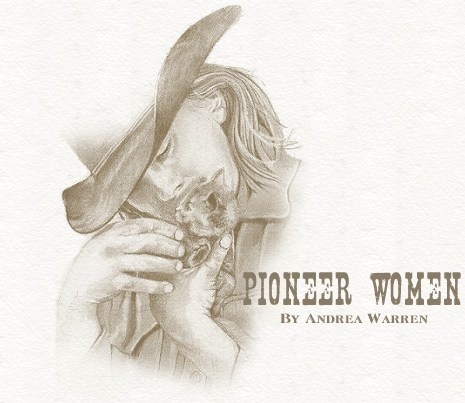During the long hours herding cattle, Grace had no one to talk to and nothing to do with her hands. She was bored. One evening as she watched Mama piecing together squares of calico for a quilt top, she asked for some pieces of cloth to sew while she was herding. Mama said she was too young, but Grace promised to do a good job. Mama finally said she could have four little squares to stitch together. "But you'll have to do neat work and fasten the ends of your thread good," she said, "for I can't afford to waste thread and pieces on you if you don't."
Grace stitched carefully so that her mother would give her more fabric. "I knew that Mama's needlework was extra fine, and that it wouldn't be easy to learn to sew as well as she did. But it was during those days, when I worked so hard to keep my stitches even and the block corners matched, that I began to dream of the time when I could make quilts even finer than Mama's, finer than any others in the world."
Grace never complained to Mama about herding. She knew her mother wanted her to be ladylike and not do outside work. Pioneer daughters often clashed with their more genteel mothers about their behavior. Many mother-daughter battles focused on the sunbonnet. Little girls would throw off the hot, awkward headgear. Those with light skin would tan and freckle, upsetting their mothers who believed, as did other white-skinned American women at that time, that a smooth untanned face was a sign of beauty. Mama insisted on sunbonnets. Florry always kept hers on and did not mind when Mama rubbed buttermilk on her face to soften her skin. Grace wore her hat only to please her mother but in spite of buttermilk and bonnets, her skin still turned brown.
Some homesteading women wore corsets and high-heeled shoes while they worked. Not Mama. She liked to look stylish, but she was also practical. She always wore an apron over her loose black dresses, which helped keep them clean. She could wash and iron an apron more easily than a dress. And aprons were useful. She could wipe her hands on them, take hold of a hot pan, dry a dish, and gather eggs by holding the corners to create a carryall.
Pioneer women preferred sturdy calico dresses for everyday wear, but many still liked to know what was fashionable. They subscribed to women's magazines like Godey's Lady's Book and received mail-order catalogs like Montgomery Ward's that showed the latest styles. Many were very clever at sewing copies of them to wear for special occasions and for church.
Even though they lived in primitive houses, pioneer women were also interested in home decorating. They brought flower seeds, feather pillows, quilts, and lace tablecloths from their former homes. They copied the popular styles of the day, such as the Victorian preference for covering every surface with a different pattern. They also enjoyed reading and rereading works of classical literature they had brought with them. The first baby born in a soddy near Dodge City, Kansas, was named Childe Harold after a character in a poem by Lord Byron. Most women were determined to not give in to the roughness of their lives. Some served every meal on the good china they had brought west with them. They trained their children to use proper table manners and tolerated no swear words.
Still, Mama and other pioneer women lived very differently from their own mothers. When necessary, they helped their husbands in the fields and barns. When husbands took outside jobs, women often did all the chores and cared for crops. Women sometimes took outside jobs as well, working as cooks, housekeepers, seamstresses, and schoolteachers.
Women started schools, churches, libraries, and missionary societies, and they helped their neighbors. The Midwest could not have been settled without them; yet women were usually viewed as "helping out" their husbands. Within the family, they were expected to obey the men. Pioneer life was physically hard on them. A 29-year-old pioneer wrote in a letter, "I am a very old woman. My face is thin, sunken, and wrinkled, my hands bony, withered, and hard."

